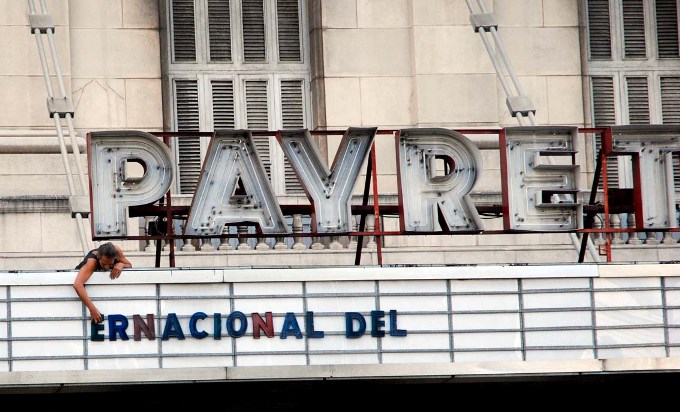Sixty Seconds & More
Regina Cano

I found out about an unusual cinema-related event from a friend, but I didn’t imagine the whole creative charge would explode in just 60 seconds.
“Cinema in 60,” is a small-format exhibit that forces us to question the pretensions of feature and medium-length films, and which comes with all the creativity involved in producing on a shoe string.
This audiovisual exhibit is organized by the New Latin American Cinema Foundation along with the Covacha Produce production group, the foundation’s creator.
As was explained, “This exhibit’s main objective is to motivate audiovisual creation and the production of materials where the budget is not the main factor. The aim is to create a systematic space in which the different aesthetic forms converge and unfold.”
The showing consists of a non-competitive exhibit of 60 films —each 60 seconds long— which are produced using any technology and in whatever equipment. A jury made up of critics, directors and the producers of the project will choose 30 works to be included in a multimedia along with information on their directors so that the films selected might achieve greater visibility and wider distribution.
The creation of films in Cuba generally involves those film directors who are recognized by the mass media and institutions that represent and confer status on them. Likewise, the permission of the censor comes into play.
The cinema in Cuba is characterized by the standards of grand-scale production —with the all of the equipment and financial resources this requires— as well as the structure of star-quality cinema.

However, there exist two events in the country that defend an alternative approach to achieving cinematographic film success: the Low-Budget Film Festival of Gibara (in Holguin Province, in the east of the country); and the Young Directors Exhibit, which as its name implies, considers the works of novice cineastes.
With such extremely short projection time, the actors in “Cinema in 60” —who aren’t really actors and have no pretenses of being so, given the manner in which they behave in front of the camera— have different intentions. What’s enjoyable about these super-short films is the idea, the concept and the intention to communicate with assertiveness.
The short films I saw at the exhibit were well directed, with clear and quality images, good spatial techniques and simple structures. Some of them made me laugh, different ones made me think, and others caused me to just contemplate.
There was social criticism, heads up calls, references to human existence and Cuban humor that seldom lacks in eliciting a smile over the things we do.
The concept of such an event like this may well become indispensable for the contemporary cultural scene, because anyone who has some equipment, be it the simplest digital video camera, can film in line with the format of “Cinema in 60,” which fits our needs like a ring on a finger.
Congratulations to my friend Claudia Esposito and to Covacha Produce productions.
